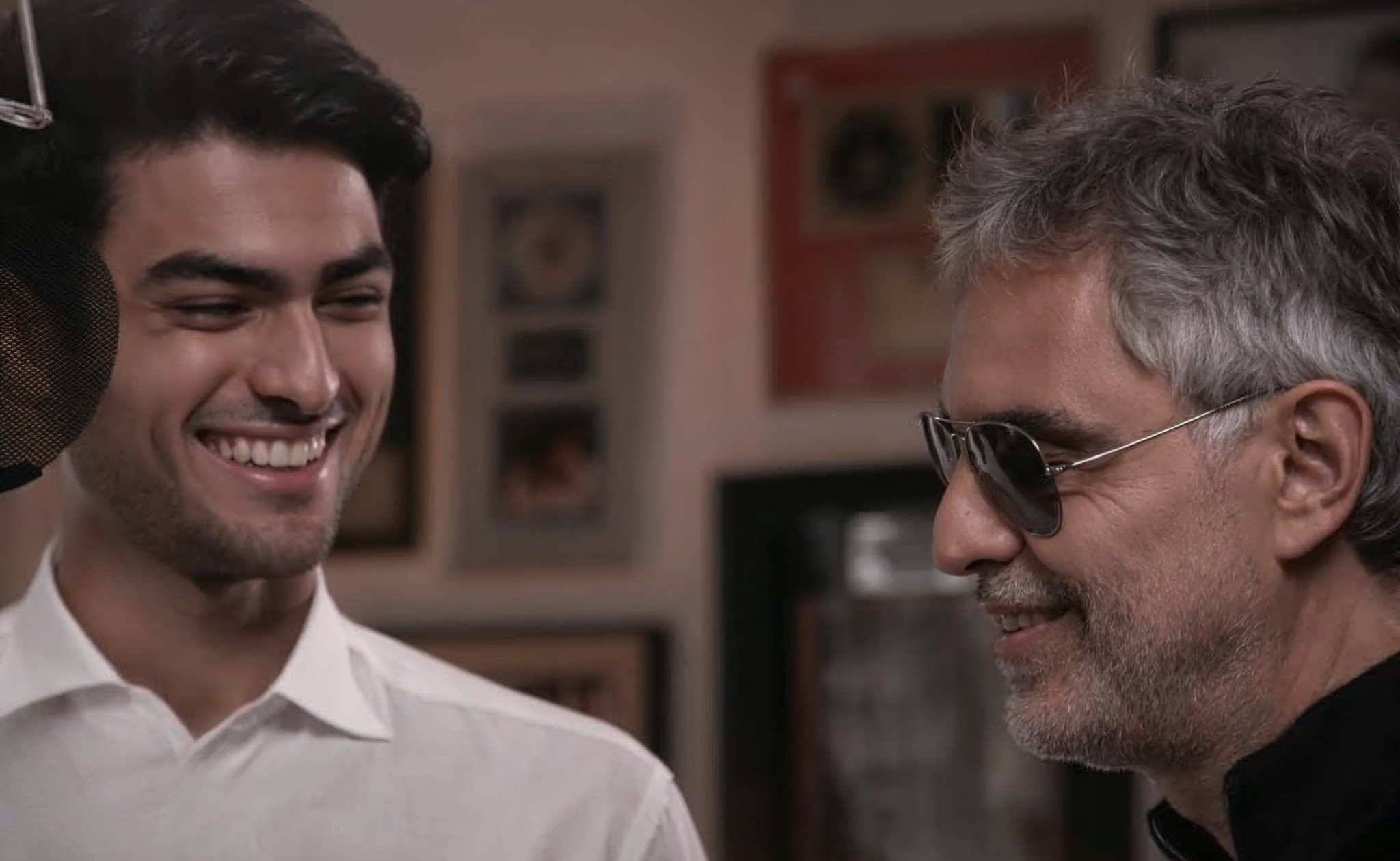The 20-minute feature offers a deeply intimate glimpse into the working relationship between Andrea Bocelli, the world’s most cherished operatic voice, and his 26-year-old son Matteo. Far from a simple duet session, what unfolds is a moving exploration of legacy, discipline, and generational artistry. Andrea, calm and deliberate, guides Matteo through each line of the Spanish-language ballad, layering his decades of musical experience into every word. In one particularly affecting moment, Andrea pauses to demonstrate a subtle phrasing technique, and Matteo, with his own pop-influenced sensibility, responds by reshaping it into something uniquely his. “It’s more than mentorship,” Matteo says quietly. “It feels like receiving centuries of musical knowledge directly into my bloodstream.”
The newly released behind-the-scenes film grants audiences rare access into the Bocellis’ creative world. Shifting between expansive shots of the majestic Rudolfinum Hall in Prague—where an orchestra of forty musicians gives the arrangement breath—and intimate close-ups that capture every flicker of emotion across Matteo’s face, the film transcends the usual making-of format. It becomes a meditation on inheritance, not just of music, but of soul.
Throughout the film, Andrea’s teaching style emerges as a blend of technical rigor and storytelling. In a tender scene, he recounts memories of his mother’s lullabies to explain the emotional weight behind the phrase “búscame en tu sueño” (“find me in your dream”). Matteo, at first unsure of how to deliver the line’s gentle crescendo, suddenly finds the emotional core after hearing his father’s story. The audio team isolates this take in the final mix, highlighting the moment where technical delivery melts into genuine feeling.
One of the film’s most striking elements is the creative tension between the two. Andrea, ever the perfectionist, insists on re-recording a bridge seventeen times, striving for what he describes as “geometric precision.” Matteo, by contrast, pushes to preserve an earlier, more emotionally raw version. Their passionate discussion, captured in fast-paced Italian with English subtitles, ultimately leads to a middle ground. This compromise—balancing Andrea’s structural clarity with Matteo’s instinctive passion—becomes the defining texture of the final recording.
Visually, the film finds innovative ways to portray the intangible. In a breathtaking shot from above, the soundwaves of their voices are rendered like intertwining strands of DNA. The audio console becomes a character in its own right, its sliders rising and falling in time with the music. Even the studio’s vintage Neumann U47 microphone—a relic from Andrea’s early career—takes on symbolic weight, its timeworn surface bearing the marks of past masterpieces.
More than a documentary, the film captures something ephemeral: a moment where legacy meets reinvention, and where the invisible threads of family and music are woven into something unforgettable.
